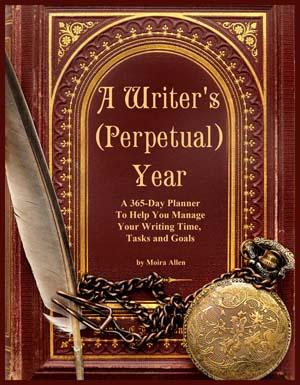 Your Guide to a Successful Writing Career
| |||
|
by Barbara Neal Varma
Then someone whispered in your ear about a hidden cache of markets ripe with writing opportunities: trade magazines, custom publications, even corporate newsletters produced in-house for a company's customers. These writing venues, while admittedly less visible to mainstream audiences, still retain a sizable readership and ample opportunity for payment-- often at a rate comparable or even better than their consumer cousins. Plus, placement in these publications can serve as a stepping-stone to one of the more popular picks posing on your mom's coffee table. But wait. Writing for business-based magazines doesn't mean writing without competition, and if you stick to the staid rules of business writing learned back in high school your submissions may still reap only rejection notes. Today's producers of business and trade publications are looking for articles that can both deliver a key messages and keep their readers' interest. After all, their readers are often their customers, too-- or potential customers in the case of advertisement literature. Following proper business format is essential, but don't stop there. Go the extra mile to make your writing as gripping as the latest mystery novel. Keep it Simple, Not Bland There's a reason the Computers for Dummies books (and other titles in the series) do so well: they're comfortably readable. Unlike a traditional textbook, the writing includes elements to entertain the reader, making complex concepts easier to understand. Anyone needing tackle a specific topic can just buy the familiar black and yellow book, grab a cup of tea and settle in to learn by story. I write for a federal agency, so I know the challenge of mixing business writing with reading pleasure. During one of my agency's outreach campaigns I was given the task of writing info-articles to insert within publications serving our target audience of restaurant business owners. Our message was heavy with legal requirements and technical references, certain to remain ignored. So I borrowed some catch phrases from the food and beverage industry and used it to dress the message. The terms of law became a "legal recipe for success," the required forms the "right ingredients" and so on. Publications serving the restaurant business community were eager to print the ready-made articles. They understood the need to distribute the critical information to their members and relieved to find it both comprehensive and comprehendible. A straight list of facts may leave the reader asleep and uninformed. Instead, keep the writing conversational, keep it entertaining, and your corporate clients will keep coming back for more. Add Drama, Raise the Stakes We all want to know the same thing when we read an article: What's this about and why should I care? In the case of corporate magazines, readers aren't always subscribers so they may treat the publication as an advertisement or never get around to reading it at all. Business articles can range from general pieces that could also appear in consumer magazines to highly targeted technical articles for customers or clients-- with a goal to advance the sponsoring company's interests. Fine. That's what they're paying you to help them do. But when writing is meant to be persuasive, it can't read like an instruction manual or the reader's attention will flag before the second paragraph. Samir Husni, a University of Mississippi professor and expert industry observer notes, "Today's readers are television viewers first, skimmers second, and readers third. If we can turn them into skimmers and then readers, they will sit down and read that lengthy article. But I have to get them excited to get them into that lengthy article to start." Take a cue from fiction writing. Fiction novels are written to incite a reader's interest and their rapt attention. The reader feels concern, alarm, excitement along with the hero or villain-- the same emotions that business article needs to sell its message. Acura's Style magazine primarily targets young, affluent car-buying customers, a demographic difficult to seduce in today's sensory-attentive society. If intrigue isn't introduced within the first 500 words, the reader is likely to toss the article aside for the Victoria's Secret catalogue lying face-up on the coffee table. Write to entice. For a fitness instructors' magazine, lead with: "Lydia Smith's routine morning jog was interrupted Monday morning by a visit to the emergency room." For a financial planning publication: "Who wants to be a millionaire? You." Detail the Details Specificity is the backdrop to any good story, the base for every good business article. As a stage set frames the play, details frame the writing, adding a three-dimensionality to the message. Keen observation is the first step to becoming a more creative writer within any style of writing, but especially so for that marketing piece you've just been hired to craft. When describing details around a product or profession, select words and phrases that pack specific information: not just "car," but "Corvette," not just "computer" but "the latest streamlined laptop to hit the market." Organize the information by type (smells, colors, textures), proximity (items that occur together such as "leather interior," "memory and mother board"), quality (reliable, risky, expert, amateurish), chronologically (list actions as they occur). When describing a how-to technique for the latest gadget, you might organize the details spatially, moving the process step by step. Avoid words that allow ambiguity. "Bank," for example, has several meanings. One can deposit money in a bank (noun) or an airplane can bank (verb) to the left. "Investing," however, specifies the act of giving something in anticipation of a profitable return. Writers investing in the details can expect positive results and reap repeated sales. Spell out Acronyms In my agency, program acronyms like STRIVE or ADAPT pepper the writing. New initiatives are especially susceptible, management wanting a descriptive and witty name to adorn their latest program's debut. The problem is that readers-- even a company's customers or employees-- may not know or remember what the nickname stands for. They'll find themselves more frustrated than informed. Business buzzwords should be unraveled for the average reader, spelled out for all to understand. This means preliminary research on the writer's part to decipher the corporate codes, but the extra effort will impress the target editors. Once introduced, an acronym title can be inserted within the text to allow for easier reading and rhythm, adding a perceived insider's touch to the overall flavor of the article. Make Room for Anecdotes Anecdotes frame a message better than a simple list of facts. One time I was writing about a new international program in which our agency's employees taught foreign administrators how to apply our processes to their own countries. It was an interesting topic but my first draft was half asleep. At lunchtime I stopped at the grocery store and spotted a tabloid's bold headline: "ALIENS ON TOUR! NEXT STOP: EARTH!" It gave me an idea. I snuck the magazine into my office and surreptitiously began to read about the ridiculous. The articles were chock full of juicy verbs, naughty nouns, and, of course, true, eyewitness accounts! Credibility aside, it was fun-- and my article on the international program now had a lead: "Next stop: Athens." The rest of my article, inspired from the tabloid's dare-to story style was much livelier than before, and eventually contained true accounts from the employees already working the program-- telling the message better than I ever could. Adding anecdotes and/or first-person accounts can season the piece, bring life to the page. A writing instructor once advised, "People learn by story." For the freelancer wanting to break in to the burgeoning market of business-based publications, that advice is worth remembering. Content must be true to the client's needs, but don't forget the reader's interest, which is the key to conveying any message. Creative writers who can bring a business piece beyond just-the-facts will ultimately win the bid, make the dollar. And so will their corporate clients. Four Main Categories for Business Publications:
This article originally appeared in Byline. This article may not be reprinted without the author's written permission. Barbara Neal Varma has contributed to such publications as ByLine, Senior Living newspaper, Long Story Short.us, and others. Her essays have won awards from the National Writers Association, Anthology and Writer's Digest magazine. Her articles may be viewed https://www.BarbaraNealVarma.com. |
| ||
| |||




